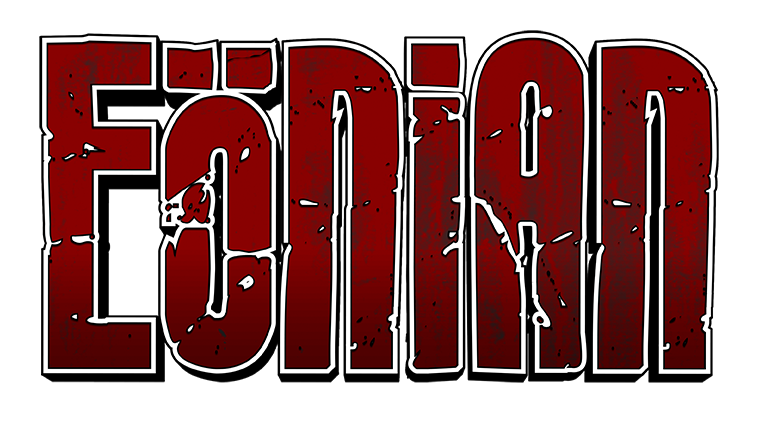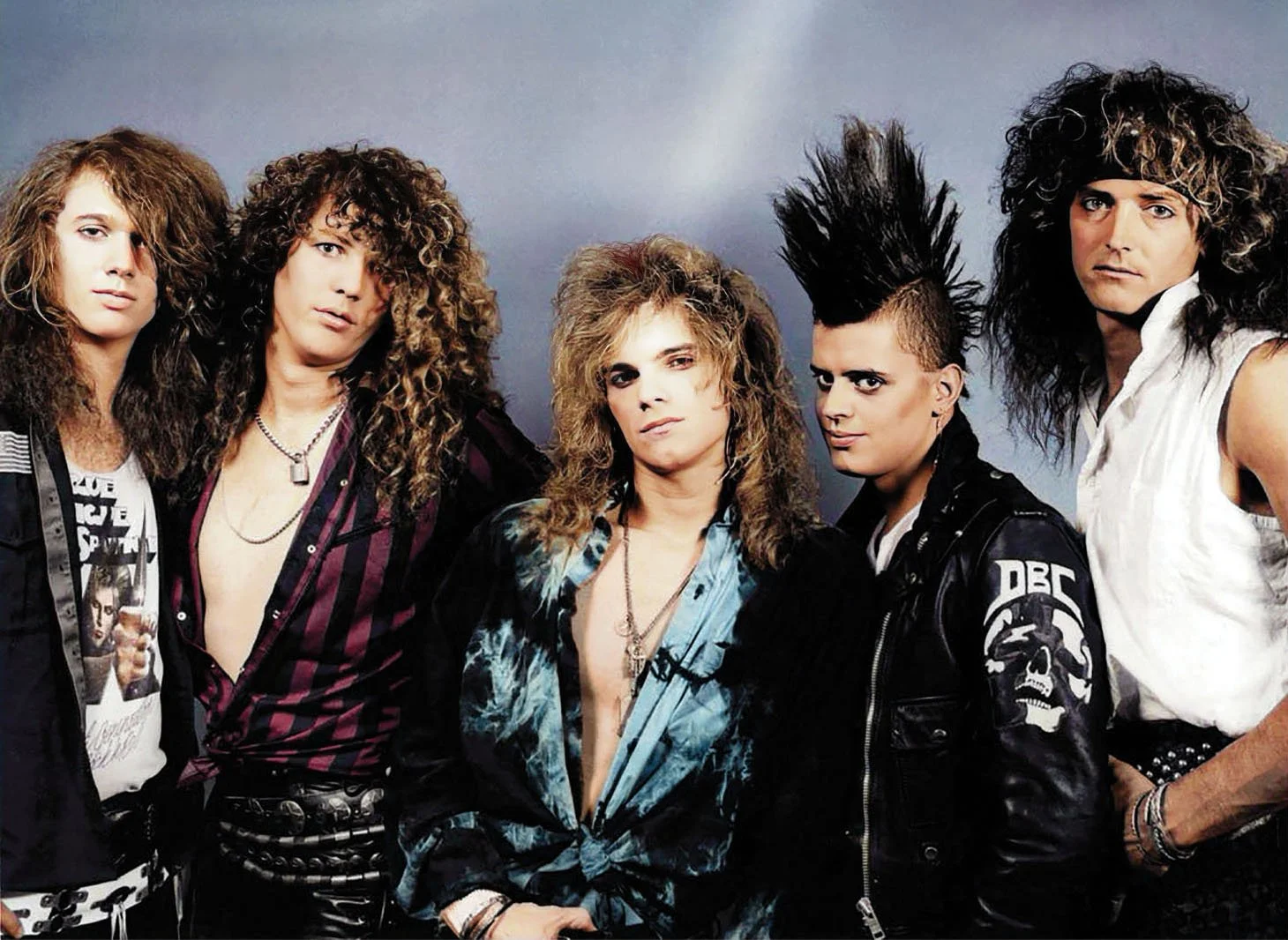RUDEBOY - Broken Bones
From Los Angeles, California | Release Date: June 27, 2025 | Catalog #: ER00081
Jesse Dave Loren - Lead Vocals (1988-1990)
David Cheek - Lead Guitar & Vocals (1985-1991)
Andy Shaw - Rhythm Guitar (1987-1990)
Marc Danzeisen - Rhythm Guitar (1990-1991)
Drake Duncan - Bass (1987-1990)
Tony De La Rosa - Bass (1990-1991)
Patrick Mullis - Drums (1985-1991)
1. Eye On You
2. Broken Bones
3. Nasty Girl
4. Right Size For Love
5. Rub It In
6. Born Hard
7. The Morning After
8. Serpent Of Love
9. Noctuna Lefemme
10. Midnight Sun
11. Rudeboy
12. Glammer Rammer
LISTEN
In the late 1970s, in the heart of Southern California’s Inland Empire, a punk band known as The Stepmothers was born, setting the stage for one of rock’s most fascinating and rebellious musical journeys. In 1978, The Stepmothers came together in Pomona, CA, and though they were far from the center of the punk scene, their music and energy would soon carve out a legend in local rock lore. In fact, it was this band that coined the term “Inland Empire” with the song on their 1981 debut album You Were Never My Age, released by Posh Boy Records.
Among the band’s original members was Patrick Mullis, the powerhouse drummer who would go on to lead the formation of RUDEBOY. Despite the local punk scene fading and the inevitable band breakup due to egos and musical differences, Patrick’s legacy within The Stepmothers remained crucial. As punk began to fizzle out, Patrick’s connections and relationships with bands like Mötley Crüe would form the foundation of his future endeavors.
Patrick had been a key player when Mötley Crüe was an opening act for The Stepmothers. His hard-driving sound and distinctive custom black Ludwig drum kit—featuring rare 26-inch kick drums- left a mark not only on Mötley Crüe but also in the larger world of rock music. Notably, Tommy Lee of Mötley Crüe borrowed Patrick's drum kit for their performance at the historic US Festival in Glen Helen Park in 1983. His iconic drums would later feature in Van Halen and Scorpions videos, thanks to longtime friend Todd Trent, a Ludwig representative.
By 1985, Patrick, disillusioned with the changing music scene, found himself drawn to creating a new sound, one that captured the energetic and raw power of punk but with more accessible, catchy grooves. This was the birth of RUDEBOY—a band that would stand out for its unique fusion of punk, rock, and an edgy attitude that made them a force to be reckoned with.
Patrick had a specific vision for RUDEBOY—a hard-driving rock band with a mix of raw, trashy elements that could appeal to a wider audience, including females. But it was the name that solidified his concept. At a party, a girl, in her drunken flirtation, called him a “very RUDEBOY.” At that moment, Patrick knew he had found the perfect name for his new band.
David Cheek, an experienced musician, recently from Gazzarri’s headliners Control and briefly from the early The Stepmothers, joined the project soon after. Patrick had known David from their days in the LA music scene, and David was the perfect fit. The two shared a deep bond through their love of bands such like Kiss, Motörhead, AC/DC, Alice Cooper, The Cult, The New York Dolls, and Mötley Crüe. Together, they formed the core of RUDEBOY, with Patrick on drums and David on guitar.
The initial lineup of RUDEBOY was tested with Steve Bodie on vocals, Bruce Bryan first and then Nicky Licata on bass, Things did not work out with Steve and so David took over on the lead vocals. Shortly thereafter they added Drake Duncan to the bass. Drake, a young punk rocker with a mohawk, had been a fan of The Stepmothers and impressed Patrick with his raw style and potential. Joining RUDEBOY at just seventeen, Drake brought fresh energy to the band.
Drake’s personal struggles had forged his path to music. Growing up in a turbulent household, he found refuge in the world of punk rock, and RUDEBOY gave him a sense of purpose. Despite his difficult background, the band became his validation, and through their shared experiences, he learned the true essence of what it meant to be in a band. His bass lines would become the heartbeat of RUDEBOY as they played shows at iconic venues like The Green Door in Montclair and built their reputation.
In June of 1987, shortly after Drake came on board, he recommended bringing in his friend Andy Shaw to play rhythm guitar, a move that would round out the band's sound. With this addition, the core lineup of RUDEBOY was nearly complete. The band quickly became a fixture on the L.A. music scene, playing a flurry of live shows and sharing the stage with notable acts like EZO, who were a standout, as well as The BulletBoys. RUDEBOY also made their mark at iconic venues such as the Whisky a Go Go, where they performed an impressive twenty-six times throughout 1988 alone.
As the band honed its sound, Jesse Scott Davis (originally David Loren) joined as the lead vocalist after a chance encounter with Drake in Montclair Mall. Jesse, fresh off a year of touring with indie-metal band Rox Sedan, was immediately drawn to the band’s raw, unpolished sound. His powerful vocals and presence helped elevate RUDEBOY to new heights, as they embraced the sex, drugs, and rock-and-roll lifestyle synonymous with 1980s LA. The band quickly gained a following, playing house parties and legendary clubs, and soon, their performances were generating buzz.
By 1988, the band was starting to attract the attention of industry insiders. Sabrina Frees-Perrin, a photographer for Metal Edge magazine, was instrumental in helping RUDEBOY land their first real break. She introduced the band to David Wayne, former lead vocalist of Metal Church, who became their manager and helped secure high-profile gigs. The band’s rising popularity led to a recording contract offer from IRS Records (MCA). However, they passed on the deal, believing that better opportunities would come. Unfortunately, no further offers materialized, and tensions within the band began to grow.
In 1990, as the music scene began to shift with the rise of grunge, Drake and Andy left the band to form Texas Vamps. With their departure, Jesse and Patrick were left to carry the torch for RUDEBOY. They recruited seasoned musicians Marc Danzeisen (rhythm guitar) and Tony De La Rosa (bass) to continue pushing forward. The revamped lineup recorded new songs and shopped demos to labels, but the grunge wave was already overtaking the LA rock scene. A final showcase at the Whisky a Go Go, attended by Gilby Clarke, failed to ignite the spark they had hoped for, marking the end of RUDEBOY’s reign.
Marc Danzeisen and Tony De La Rosa had come from rich musical backgrounds, playing with acts like Gilby Clarke, Riverdogs, and BulletBoys. Marc, having spent years in the industry, brought a wealth of experience to RUDEBOY’s final iteration, while Tony, who had played in Renegade and toured with bands like BulletBoys, injected new life into the band’s sound. Despite the fresh lineup and new material, the rise of grunge left little room for the glam-punk rock RUDEBOY had come to represent.
Despite the band’s eventual dissolution, RUDEBOY remains a cherished memory for all involved. From their energetic shows to their raw, captivating sound, they were part of the last great wave of LA’s rock scene in the 1980s. Patrick’s dream of creating “Hard Fuggen Rock” lives on in the music that RUDEBOY left behind - a legacy of punk’s heart, rock’s soul, and a sound that was all their own.


